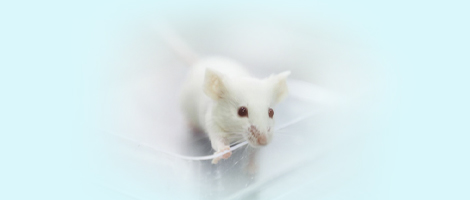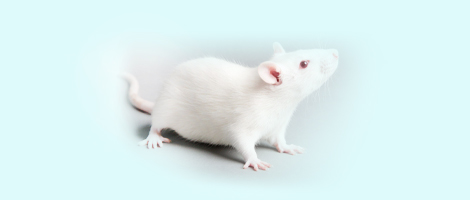?动物研究:体内实验报告?即 ARRIVE 2.0 指南的解释和阐述(一)
1
2023
... PLoS Biology期刊于2020年发表了ARRIVE 2.0指南即《动物研究:体内实验报告》完整解读版(原文请见https://arriveguidelines.org).该解读版是一份适用于任何活体动物研究及报告,用以指导实验设计、实施、报告等整个动物实验研究过程规范性的内容清单和详解说明.《实验动物与比较医学》于2023年第43卷第1~4期分别介绍了动物实验研究报告的国际指南ARRIVE 2.0基本情况及期刊实施计划,并对ARRIVE 2.0指南中关键10条的解释和阐述(包括国际期刊遵循ARRIVE 2.0指南的最佳实践)进行了中文编译[103-104, 155].本文将继续对ARRIVE 2.0指南中“推荐11条”的第1~5条(即条目11~15),包括“摘要”、“研究背景”、“研究目标”、“伦理声明”和“饲养场所和饲养”等部分进行相应编译介绍,以期促进国内研究人员充分理解并使用 ARRIVE 2.0 指南,以提高动物实验研究及报告的规范性. ...
?动物研究:体内实验报告?即 ARRIVE 2.0 指南的解释和阐述(一)
1
2023
... PLoS Biology期刊于2020年发表了ARRIVE 2.0指南即《动物研究:体内实验报告》完整解读版(原文请见https://arriveguidelines.org).该解读版是一份适用于任何活体动物研究及报告,用以指导实验设计、实施、报告等整个动物实验研究过程规范性的内容清单和详解说明.《实验动物与比较医学》于2023年第43卷第1~4期分别介绍了动物实验研究报告的国际指南ARRIVE 2.0基本情况及期刊实施计划,并对ARRIVE 2.0指南中关键10条的解释和阐述(包括国际期刊遵循ARRIVE 2.0指南的最佳实践)进行了中文编译[103-104, 155].本文将继续对ARRIVE 2.0指南中“推荐11条”的第1~5条(即条目11~15),包括“摘要”、“研究背景”、“研究目标”、“伦理声明”和“饲养场所和饲养”等部分进行相应编译介绍,以期促进国内研究人员充分理解并使用 ARRIVE 2.0 指南,以提高动物实验研究及报告的规范性. ...
?动物研究:体内实验报告?即 ARRIVE 2.0 指南的解释和阐述(二)
1
2023
... PLoS Biology期刊于2020年发表了ARRIVE 2.0指南即《动物研究:体内实验报告》完整解读版(原文请见https://arriveguidelines.org).该解读版是一份适用于任何活体动物研究及报告,用以指导实验设计、实施、报告等整个动物实验研究过程规范性的内容清单和详解说明.《实验动物与比较医学》于2023年第43卷第1~4期分别介绍了动物实验研究报告的国际指南ARRIVE 2.0基本情况及期刊实施计划,并对ARRIVE 2.0指南中关键10条的解释和阐述(包括国际期刊遵循ARRIVE 2.0指南的最佳实践)进行了中文编译[103-104, 155].本文将继续对ARRIVE 2.0指南中“推荐11条”的第1~5条(即条目11~15),包括“摘要”、“研究背景”、“研究目标”、“伦理声明”和“饲养场所和饲养”等部分进行相应编译介绍,以期促进国内研究人员充分理解并使用 ARRIVE 2.0 指南,以提高动物实验研究及报告的规范性. ...
?动物研究:体内实验报告?即 ARRIVE 2.0 指南的解释和阐述(二)
1
2023
... PLoS Biology期刊于2020年发表了ARRIVE 2.0指南即《动物研究:体内实验报告》完整解读版(原文请见https://arriveguidelines.org).该解读版是一份适用于任何活体动物研究及报告,用以指导实验设计、实施、报告等整个动物实验研究过程规范性的内容清单和详解说明.《实验动物与比较医学》于2023年第43卷第1~4期分别介绍了动物实验研究报告的国际指南ARRIVE 2.0基本情况及期刊实施计划,并对ARRIVE 2.0指南中关键10条的解释和阐述(包括国际期刊遵循ARRIVE 2.0指南的最佳实践)进行了中文编译[103-104, 155].本文将继续对ARRIVE 2.0指南中“推荐11条”的第1~5条(即条目11~15),包括“摘要”、“研究背景”、“研究目标”、“伦理声明”和“饲养场所和饲养”等部分进行相应编译介绍,以期促进国内研究人员充分理解并使用 ARRIVE 2.0 指南,以提高动物实验研究及报告的规范性. ...
?动物研究:体内实验报告?即 ARRIVE 2.0指南的解释与阐述(三)
1
2023
... PLoS Biology期刊于2020年发表了ARRIVE 2.0指南即《动物研究:体内实验报告》完整解读版(原文请见https://arriveguidelines.org).该解读版是一份适用于任何活体动物研究及报告,用以指导实验设计、实施、报告等整个动物实验研究过程规范性的内容清单和详解说明.《实验动物与比较医学》于2023年第43卷第1~4期分别介绍了动物实验研究报告的国际指南ARRIVE 2.0基本情况及期刊实施计划,并对ARRIVE 2.0指南中关键10条的解释和阐述(包括国际期刊遵循ARRIVE 2.0指南的最佳实践)进行了中文编译[103-104, 155].本文将继续对ARRIVE 2.0指南中“推荐11条”的第1~5条(即条目11~15),包括“摘要”、“研究背景”、“研究目标”、“伦理声明”和“饲养场所和饲养”等部分进行相应编译介绍,以期促进国内研究人员充分理解并使用 ARRIVE 2.0 指南,以提高动物实验研究及报告的规范性. ...
?动物研究:体内实验报告?即 ARRIVE 2.0指南的解释与阐述(三)
1
2023
... PLoS Biology期刊于2020年发表了ARRIVE 2.0指南即《动物研究:体内实验报告》完整解读版(原文请见https://arriveguidelines.org).该解读版是一份适用于任何活体动物研究及报告,用以指导实验设计、实施、报告等整个动物实验研究过程规范性的内容清单和详解说明.《实验动物与比较医学》于2023年第43卷第1~4期分别介绍了动物实验研究报告的国际指南ARRIVE 2.0基本情况及期刊实施计划,并对ARRIVE 2.0指南中关键10条的解释和阐述(包括国际期刊遵循ARRIVE 2.0指南的最佳实践)进行了中文编译[103-104, 155].本文将继续对ARRIVE 2.0指南中“推荐11条”的第1~5条(即条目11~15),包括“摘要”、“研究背景”、“研究目标”、“伦理声明”和“饲养场所和饲养”等部分进行相应编译介绍,以期促进国内研究人员充分理解并使用 ARRIVE 2.0 指南,以提高动物实验研究及报告的规范性. ...
More informative abstracts revisited
1
1990
... 解释:准确的摘要可增加文章的实用性和影响力,并使读者能够评估研究的可靠性[156].摘要通常被读者用作筛选工具,以决定是否阅读全文或是否将一篇文章纳入系统综述.然而,很多摘要往往没能包含足够的信息[157],或者包含了与文章其他部分不一致的信息[158-159].进行系统综述时,相关论文的初始筛选是基于标题、摘要和关键词[160].如果摘要中忽略诸如所用动物种类或所测试药物等信息,会因为无法被识别而限制了其被纳入相关研究及临床前系统综述的价值.例如,在整理MVA85A疫苗对动物结核病攻毒效果的系统综述过程中,一篇最大的临床前试验文章并未被纳入,因为其摘要或关键词中没有提及疫苗名称,直到该领域专家讨论后才被纳入系统综述[161]. ...
A randomised controlled trial of an Intervention to Improve Compliance with the ARRIVE guidelines (IICARus)
1
2019
... 解释:准确的摘要可增加文章的实用性和影响力,并使读者能够评估研究的可靠性[156].摘要通常被读者用作筛选工具,以决定是否阅读全文或是否将一篇文章纳入系统综述.然而,很多摘要往往没能包含足够的信息[157],或者包含了与文章其他部分不一致的信息[158-159].进行系统综述时,相关论文的初始筛选是基于标题、摘要和关键词[160].如果摘要中忽略诸如所用动物种类或所测试药物等信息,会因为无法被识别而限制了其被纳入相关研究及临床前系统综述的价值.例如,在整理MVA85A疫苗对动物结核病攻毒效果的系统综述过程中,一篇最大的临床前试验文章并未被纳入,因为其摘要或关键词中没有提及疫苗名称,直到该领域专家讨论后才被纳入系统综述[161]. ...
Accuracy of data in abstracts of published research articles
1
1999
... 解释:准确的摘要可增加文章的实用性和影响力,并使读者能够评估研究的可靠性[156].摘要通常被读者用作筛选工具,以决定是否阅读全文或是否将一篇文章纳入系统综述.然而,很多摘要往往没能包含足够的信息[157],或者包含了与文章其他部分不一致的信息[158-159].进行系统综述时,相关论文的初始筛选是基于标题、摘要和关键词[160].如果摘要中忽略诸如所用动物种类或所测试药物等信息,会因为无法被识别而限制了其被纳入相关研究及临床前系统综述的价值.例如,在整理MVA85A疫苗对动物结核病攻毒效果的系统综述过程中,一篇最大的临床前试验文章并未被纳入,因为其摘要或关键词中没有提及疫苗名称,直到该领域专家讨论后才被纳入系统综述[161]. ...
Impact of spin in the abstracts of articles reporting results of randomized controlled trials in the field of cancer: the SPIIN randomized controlled trial
1
2014
... 解释:准确的摘要可增加文章的实用性和影响力,并使读者能够评估研究的可靠性[156].摘要通常被读者用作筛选工具,以决定是否阅读全文或是否将一篇文章纳入系统综述.然而,很多摘要往往没能包含足够的信息[157],或者包含了与文章其他部分不一致的信息[158-159].进行系统综述时,相关论文的初始筛选是基于标题、摘要和关键词[160].如果摘要中忽略诸如所用动物种类或所测试药物等信息,会因为无法被识别而限制了其被纳入相关研究及临床前系统综述的价值.例如,在整理MVA85A疫苗对动物结核病攻毒效果的系统综述过程中,一篇最大的临床前试验文章并未被纳入,因为其摘要或关键词中没有提及疫苗名称,直到该领域专家讨论后才被纳入系统综述[161]. ...
Machine learning algorithms for systematic review: reducing workload in a preclinical review of animal studies and reducing human screening error
1
2019
... 解释:准确的摘要可增加文章的实用性和影响力,并使读者能够评估研究的可靠性[156].摘要通常被读者用作筛选工具,以决定是否阅读全文或是否将一篇文章纳入系统综述.然而,很多摘要往往没能包含足够的信息[157],或者包含了与文章其他部分不一致的信息[158-159].进行系统综述时,相关论文的初始筛选是基于标题、摘要和关键词[160].如果摘要中忽略诸如所用动物种类或所测试药物等信息,会因为无法被识别而限制了其被纳入相关研究及临床前系统综述的价值.例如,在整理MVA85A疫苗对动物结核病攻毒效果的系统综述过程中,一篇最大的临床前试验文章并未被纳入,因为其摘要或关键词中没有提及疫苗名称,直到该领域专家讨论后才被纳入系统综述[161]. ...
Effects of MVA85A vaccine on tuberculosis challenge in animals: systematic review
1
2015
... 解释:准确的摘要可增加文章的实用性和影响力,并使读者能够评估研究的可靠性[156].摘要通常被读者用作筛选工具,以决定是否阅读全文或是否将一篇文章纳入系统综述.然而,很多摘要往往没能包含足够的信息[157],或者包含了与文章其他部分不一致的信息[158-159].进行系统综述时,相关论文的初始筛选是基于标题、摘要和关键词[160].如果摘要中忽略诸如所用动物种类或所测试药物等信息,会因为无法被识别而限制了其被纳入相关研究及临床前系统综述的价值.例如,在整理MVA85A疫苗对动物结核病攻毒效果的系统综述过程中,一篇最大的临床前试验文章并未被纳入,因为其摘要或关键词中没有提及疫苗名称,直到该领域专家讨论后才被纳入系统综述[161]. ...
Flavonone treatment reverses airway inflammation and remodelling in an asthma murine model
1
2013
... 报告示例1:“背景和目的:哮喘是一种涉及气道高反应性和气道重构的炎性疾病.黄酮类化合物具有抗炎和抗氧化活性,可能是哮喘的潜在治疗药物.本研究目的是评估樱花素(sakuranetin)在实验性哮喘模型小鼠中的治疗效果.实验方法:雄性BALB/c小鼠在第0天和第14天腹腔注射卵清蛋白,并在第24、26和28天时吸入1%的雾化卵清蛋白.从第24天至第29天,卵清蛋白致敏的动物每天接受溶剂(生理盐水和DMSO)、樱花素(每只小鼠20 mg/kg)或地塞米松(每只小鼠5 mg/kg)处理.对照组接受生理盐水和滴鼻溶剂处理.第29天,测定小鼠的气道高反应性、炎症和结构重塑情况以及特异性IgE抗体水平,并用Bioplex试剂盒检测肺匀浆中趋化因子RANTES、IL-5、IL-4、嗜酸性粒细胞趋化蛋白(eotaxin)、IL-10、TNF-α、IFN-γ和粒细胞-巨噬细胞集落刺激因子(GMC-SF)的含量,用免疫组织化学法观察炎性细胞中8种异丙肾上腺素和NF-κB的激活情况.关键结果:实验结果显示,樱花素治疗可减轻动物的气道高反应性、炎症和重构,这些作用可归因于Th2促炎细胞因子和氧化应激减少以及NF-κB活化调控.结论和启示:这些结果强调了黄酮类化合物在该哮喘模型小鼠中对抗氧化应激的重要性,并表明樱花素是治疗哮喘的潜在候选药物.”[162] ...
An initial investigation into the effects of isolation and enrichment on the welfare of laboratory pigs housed in the PigTurn? system, assessed using tear staining, behaviour, physiology and haematology
1
2015
... 报告示例2:“在世界上的某些地区,实验猪(Sus scrofa)通常被单独饲养在无菌设施中,这可能给动物带来应激.本研究目标是确定单笼饲养和丰富环境对饲养在PigTurn(一种具有自动血液采样的新型圈养系统)中实验猪的影响,并探索将泪痕作为一种新的动物福利指标的可行性.将20头约克夏猪×长白猪杂交获得的离乳仔猪随机分为4个处理组(E-I、E-NI、NE-I和NE-NI),采用2×2析因设计即丰富环境[分为非丰富环境(NE)和丰富环境(E)两种]和隔离饲养[分为视觉分离(I)和非视觉分离(NI,即能够看到另一头猪但不能互动)两种]的组合.首先对实验猪行插管术,并在操作恢复后48 h将其放入PigTurns中.每天两次自动采集动物血液,测定白细胞分类计数和皮质醇水平.每天拍摄眼部照片,并使用0~5评分表和Image-J软件对泪痕进行量化,以测量其面积和周长.对动物行为进行视频记录和扫描采样,以确定不同行为的时间分配.使用SAS软件的MIXED程序对数据进行REML分析.结果显示环境丰富会增加动物站立和侧卧的时间比值,并降低血浆中皮质醇水平以及泪痕的面积和周长.对隔离饲养的实验猪加以环境丰富并不影响其血浆皮质醇水平,但非视觉分离大大降低了皮质醇水平.与其他3种处理相比,NE+I组(无环境丰富+视觉隔离组)的泪痕面积和周长最高.嗜酸性粒细胞的数目在E+NI组(环境丰富+非视觉隔离组)中最高,在NE+I组(无环境丰富+视觉隔离组)中最低.缺乏环境丰富措施并与同类动物隔离饲养的组合最大限度地影响了泪痕和嗜酸性粒细胞数量.适当的环境丰富加上能接近别的猪可能会改善实验猪福利.”[163] ...
The use of systematic reviews and reporting guidelines to advance the implementation of the 3Rs
1
2015
... 解释:动物研究的科学背景信息应表明之前已有研究尚存在明显的证据缺失,并解释为什么需要采用动物体内实验.即通过查询和综述研究领域内现有的动物研究文献,证明研究问题尚未得到最终解决.也可以通过提供所用模型的全面概述包括其优点和局限性来为本研究中动物模型的选择提供支持[164-166]. ...
Progress in using systematic reviews of animal studies to improve translational research
2013
Systematic reviews and meta-analysis of preclinical studies: why perform them and how to appraise them critically
1
2014
... 解释:动物研究的科学背景信息应表明之前已有研究尚存在明显的证据缺失,并解释为什么需要采用动物体内实验.即通过查询和综述研究领域内现有的动物研究文献,证明研究问题尚未得到最终解决.也可以通过提供所用模型的全面概述包括其优点和局限性来为本研究中动物模型的选择提供支持[164-166]. ...
Impact of diet-induced obesity and testosterone deficiency on the cardiovascular system: a novel rodent model representative of males with testosterone-deficient metabolic syndrome (TDMetS)
1
2015
... 报告示例1:“几十年来,心血管疾病一直是全球居民死亡首因.......心血管相关的研究大多使用健康、年轻、没有疾病的动物模型进行.最近,在健康动物模型中取得成功的心脏保护疗法,应用于胰岛素抵抗肥胖症、糖尿病、代谢综合征和衰老的动物时却相继失败,凸显出开发代表人类临床状况的疾病动物模型的必要性.......目前大多数探究心血管疾病和缺血再灌注(I-R)心肌耐受性的实验室研究是使用正常性状模型,该模型合并通过基因或饮食诱导的肥胖和代谢综合征.临床上,老年男性患者经常会同时出现睾酮缺乏和代谢综合征.......代谢综合征和睾酮缺乏之间存在着紧密而复杂的联系,可能对心血管疾病产生显著影响,而目前的模型尚未能解决这一问题.......尽管实验室研究通常依赖于单一的代谢综合征或性腺功能减退动物模型,但鉴于它们在临床实践中的相互影响,有必要开发合适的代谢综合征合并性腺功能减退动物模型,特别是在心血管疾病研究领域.”[167] ...
Validation criteria for animal models of human mental disorders: learned helplessness as a paradigm case
1
1986
... 当研究是模拟人类疾病的某一方面时,应说明该模型如何适用于解决研究的特定目标[168],包括描述:动物疾病、紊乱或损伤的诱导如何与人类情况足够相似;模型对已知临床有效的治疗方案如何反应;模型症状与临床疾病如何相似;如何选择动物特征来代表临床人群的年龄、性别和健康状况[169]. ...
Can animal models of disease reliably inform human studies?
1
2010
... 当研究是模拟人类疾病的某一方面时,应说明该模型如何适用于解决研究的特定目标[168],包括描述:动物疾病、紊乱或损伤的诱导如何与人类情况足够相似;模型对已知临床有效的治疗方案如何反应;模型症状与临床疾病如何相似;如何选择动物特征来代表临床人群的年龄、性别和健康状况[169]. ...
GABA progenitors grafted into the adult epileptic brain control seizures and abnormal behavior
1
2013
... 报告示例2:“为了达到研究目的,我们选择了一种毛果芸香碱(pilocarpine)诱导的癫痫模型,其特征是大脑损伤后强烈、频繁的自发癫痫发作,......有明显的行为异常,......以及对抗癫痫药物不敏感........这些特征涵盖了人类颞叶癫痫的几个关键特征,而颞叶癫痫是成年人最常见的癫痫类型.”[170] ...
A method for transplantation of human HSCs into zebrafish, to replace humanised murine transplantation models
1
2018
... 报告示例3:“健康造血干细胞(HSC)移植是治疗各种恶性血液病和非恶性疾病以及免疫功能障碍的关键疗法.......斑马鱼已经被确定为研究造血系统的成功模型,与哺乳动物具有显著的同源性.......斑马鱼透明胚胎的成像是一个有力的工具,对于证实斑马鱼尾部造血组织(CHT)与哺乳动物胎儿造血生态位相当非常重要........斑马鱼胚胎中异种移植揭示了斑马鱼和哺乳动物之间高度保守的机制.最近,小鼠骨髓细胞被成功移植到斑马鱼胚胎中,揭示了斑马鱼和哺乳动物之间高度保守的造血机制........此外,将CD34富集的人类细胞移植到斑马鱼体内,发现其定位在斑马鱼的CHT,且可以对斑马鱼基质细胞衍生因子产生反应.”[171] ...
Guidelines for the design and statistical analysis of experiments using laboratory animals
1
2002
... 测试一个特定的假设对于研究设计和数据分析都有意义[172-173].例如,一个旨在检测假设效应的实验可能需要使用推断统计学进行分析,并且需要提前对样本量进行统计估计(见关键10条中的第2条:样本量).假设检验研究还有一个预先定义的主要结局指标,用于评估支持特定研究问题的证据(见关键10条中的第6条:结果测量). ...
Distinguishing between exploratory and confirmatory preclinical research will improve translation
1
2014
... 测试一个特定的假设对于研究设计和数据分析都有意义[172-173].例如,一个旨在检测假设效应的实验可能需要使用推断统计学进行分析,并且需要提前对样本量进行统计估计(见关键10条中的第2条:样本量).假设检验研究还有一个预先定义的主要结局指标,用于评估支持特定研究问题的证据(见关键10条中的第6条:结果测量). ...
Cellular immune response to intrastriatally implanted allogeneic bone marrow stromal cells in a rat model of Parkinson's disease
1
2009
... 报告示例1:“本研究的主要目的是观察注射到同种异体受体[6-羟基多巴胺(6-OHDA)-半损伤大鼠,一种帕金森病(PD)动物模型]纹状体中的间充质干细胞(MSC)的细胞免疫反应,次要目的是确定这些细胞在动物体内预防黑质纹状体多巴胺耗竭和相关运动缺陷的能力[174].” ...
Calcium electroporation induces tumor eradication, long-lasting immunity and cytokine responses in the CT26 colon cancer mouse model
1
2017
... 报告示例2:“在这项探索性研究中,我们旨在研究钙电穿孔是否能引发类似于电化学疗法的抗癌免疫反应.为此,我们给患有CT26结肠肿瘤的免疫功能正常的BALB/c小鼠施予钙电穿孔、电化学疗法或基于超声的钙或博来霉素输入处理.”[175] ...
A conserved retromer-independent function for RAB-6.2 in C. elegans epidermis integrity
1
2019
... 报告示例3:“在表征rab-6.2缺失的秀丽隐杆线虫的另一项研究中,我们观察到rab-6.2(ok2254)线虫皮肤是脆弱的,因此开始从基因上分析rab-6.2(ok2254)线虫的脆弱皮肤表型.......结果发现,在正常饲养过程中rab-6.2(ok2254)线虫培养板上有几条皮肤破裂的线虫,这在野生型线虫的培养物中很少观察到.......我们推测RAB-6.2蛋白是皮肤完整性所必需的.”[176] ...
Implementing guidelines on reporting research using animals (ARRIVE etc.): new requirements for publication in BJP
1
2015
... 解释:作者有责任遵守与科学使用动物有关的法规和指南,包括确保在研究工作开始之前获得伦理委员会和/或监管机构的批准.伦理声明为编辑、审稿人和读者提供了该研究已受到伦理监督的保证[177],这也提高了关于研究中使用动物的透明度和理解,并促进了公众信任. ...
Animal welfare standards and international collaborations
1
2019
... 部分应提供一份明确的说明,解释该研究是如何遵循适当的法规和指南.包括批准该研究的机构名称和审查该研究的伦理委员会名称[例如,美国的实验动物管理和使用委员会(IACUC)或英国的动物福利和伦理审查机构(AWERB)],并注明方案或项目许可证编号以便查询.还可增加任何相关的认可,例如国际实验动物评估和认可委员会(AAALAC)[178]或良好实验室规范(GLP,即药物非临床研究质量管理规范). ...
Automated recording of home cage activity and temperature of individual rats housed in social groups: the Rodent Big Brother Project
1
2017
... 报告示例1:“所有程序均遵照1986年《英国动物(科学程序)法》[United Kingdom Animal (Scientific Procedures) Act 1986]进行,并经机构伦理审查委员会(Alderley公园动物福利和伦理审查委员会以及Babraham研究所动物福利和伦理审查委员会)批准,并在项目许可证的授权下进行(编号分别为40/3729和70/8307).”[179] ...
Ulinastatin protects against acute kidney injury in infant piglets model undergoing surgery on hypothermic low-flow cardiopulmonary bypass
1
2015
... 报告示例2:“本研究中的所有方案均经北京协和医学院阜外医院动物实验伦理委员会和北京实验动物管理委员会批准(IACUC许可证号:FW2010-101523),符合美国国立卫生研究院(NIH)出版的《实验动物管理和使用指南》(NIH出版物编号85-23,1996年修订)的规定.”[180] ...
Genetic and non-genetic inheritance of natural antibodies binding keyhole limpet hemocyanin in a purebred layer chicken line
1
2015
... 报告示例3:“样本和数据是根据法国动物选择研究所(ISA)方案在ISA员工的监督下进行收集.这部分样本和数据是作为荷兰蛋鸡商业育种计划中常规动物数据采集的一部分.针对ISA的繁殖核心群进行收集的样本和数据仅用于育种目的,是一种非实验性农业实践,受《动物法》和《皇家程序令》监管.而《荷兰动物实验法》并不适用于非实验性农业实践.因此,本研究不需要声明动物实验委员会进行伦理审查.为了本研究目的,采集样本时没有引起额外的动物不适.”[181] ...
Evaluation of the effects of space allowance on measures of animal welfare in laboratory mice
1
2018
... Examples of effects on laboratory animals
| 1 | 笼/箱/饲养系统(类型和尺寸) | 影响行为[182]和恐惧学习[183];水箱颜色影响水生物种的应激[184-185] |
| 2 | 食物和水(类型、成分、供应商和获取途径) | 影响体重、肿瘤发展、肾病严重程度[186]和出现帕金森病症状的阈值[187];母本的饮食会影响后代的体重[188] |
| 3 | 垫料和筑巢材料 | 影响对应激[189]和疼痛[190]的行为反应 |
| 4 | 温度和湿度 | 改变肿瘤发展进展[191];调节斑马鱼的性别分化[192] |
| 5 | 卫生(笼具更换/水箱换水频率、材料转移、水质) | 影响血压、心率和行为[193];增加一个额外的变异源[194-195] |
| 6 | 社会环境(群体规模和组成/饲养密度) | 损害动物福利[196];诱发攻击性行为[197-198]和应激[185] |
| 7 | 生物安全(级别) | 动物的微生物状态会导致系统性疾病参数的变化[199] |
| 8 | 照明(类型、时间表和强度) | 改变免疫和应激反应[200] |
| 9 | 环境丰富 | 减少焦虑[201-202]、应激[201-202]和异常重复行为[203-205];降低癫痫[206]和骨关节炎[207]的易感性,并改变神经系统疾病的病理学[208];增加鱼类的觅食行为[209] |
| 10 | 实验动物的性别 | 影响生理应激和疼痛行为[210] |
注:英文原表请见https://doi.org/10.1371/journal.pbio.3000411.t002. ...
Impact of IVC housing on emotionality and fear learning in male C3HeB/FeJ and C57BL/6J mice
1
2007
... Examples of effects on laboratory animals
| 1 | 笼/箱/饲养系统(类型和尺寸) | 影响行为[182]和恐惧学习[183];水箱颜色影响水生物种的应激[184-185] |
| 2 | 食物和水(类型、成分、供应商和获取途径) | 影响体重、肿瘤发展、肾病严重程度[186]和出现帕金森病症状的阈值[187];母本的饮食会影响后代的体重[188] |
| 3 | 垫料和筑巢材料 | 影响对应激[189]和疼痛[190]的行为反应 |
| 4 | 温度和湿度 | 改变肿瘤发展进展[191];调节斑马鱼的性别分化[192] |
| 5 | 卫生(笼具更换/水箱换水频率、材料转移、水质) | 影响血压、心率和行为[193];增加一个额外的变异源[194-195] |
| 6 | 社会环境(群体规模和组成/饲养密度) | 损害动物福利[196];诱发攻击性行为[197-198]和应激[185] |
| 7 | 生物安全(级别) | 动物的微生物状态会导致系统性疾病参数的变化[199] |
| 8 | 照明(类型、时间表和强度) | 改变免疫和应激反应[200] |
| 9 | 环境丰富 | 减少焦虑[201-202]、应激[201-202]和异常重复行为[203-205];降低癫痫[206]和骨关节炎[207]的易感性,并改变神经系统疾病的病理学[208];增加鱼类的觅食行为[209] |
| 10 | 实验动物的性别 | 影响生理应激和疼痛行为[210] |
注:英文原表请见https://doi.org/10.1371/journal.pbio.3000411.t002. ...
Impact of tank background on the welfare of the African clawed frog, Xenopus laevis (Daudin)
1
2016
... Examples of effects on laboratory animals
| 1 | 笼/箱/饲养系统(类型和尺寸) | 影响行为[182]和恐惧学习[183];水箱颜色影响水生物种的应激[184-185] |
| 2 | 食物和水(类型、成分、供应商和获取途径) | 影响体重、肿瘤发展、肾病严重程度[186]和出现帕金森病症状的阈值[187];母本的饮食会影响后代的体重[188] |
| 3 | 垫料和筑巢材料 | 影响对应激[189]和疼痛[190]的行为反应 |
| 4 | 温度和湿度 | 改变肿瘤发展进展[191];调节斑马鱼的性别分化[192] |
| 5 | 卫生(笼具更换/水箱换水频率、材料转移、水质) | 影响血压、心率和行为[193];增加一个额外的变异源[194-195] |
| 6 | 社会环境(群体规模和组成/饲养密度) | 损害动物福利[196];诱发攻击性行为[197-198]和应激[185] |
| 7 | 生物安全(级别) | 动物的微生物状态会导致系统性疾病参数的变化[199] |
| 8 | 照明(类型、时间表和强度) | 改变免疫和应激反应[200] |
| 9 | 环境丰富 | 减少焦虑[201-202]、应激[201-202]和异常重复行为[203-205];降低癫痫[206]和骨关节炎[207]的易感性,并改变神经系统疾病的病理学[208];增加鱼类的觅食行为[209] |
| 10 | 实验动物的性别 | 影响生理应激和疼痛行为[210] |
注:英文原表请见https://doi.org/10.1371/journal.pbio.3000411.t002. ...
Husbandry of zebrafish, Danio rerio, and the cortisol stress response
2
2013
... Examples of effects on laboratory animals
| 1 | 笼/箱/饲养系统(类型和尺寸) | 影响行为[182]和恐惧学习[183];水箱颜色影响水生物种的应激[184-185] |
| 2 | 食物和水(类型、成分、供应商和获取途径) | 影响体重、肿瘤发展、肾病严重程度[186]和出现帕金森病症状的阈值[187];母本的饮食会影响后代的体重[188] |
| 3 | 垫料和筑巢材料 | 影响对应激[189]和疼痛[190]的行为反应 |
| 4 | 温度和湿度 | 改变肿瘤发展进展[191];调节斑马鱼的性别分化[192] |
| 5 | 卫生(笼具更换/水箱换水频率、材料转移、水质) | 影响血压、心率和行为[193];增加一个额外的变异源[194-195] |
| 6 | 社会环境(群体规模和组成/饲养密度) | 损害动物福利[196];诱发攻击性行为[197-198]和应激[185] |
| 7 | 生物安全(级别) | 动物的微生物状态会导致系统性疾病参数的变化[199] |
| 8 | 照明(类型、时间表和强度) | 改变免疫和应激反应[200] |
| 9 | 环境丰富 | 减少焦虑[201-202]、应激[201-202]和异常重复行为[203-205];降低癫痫[206]和骨关节炎[207]的易感性,并改变神经系统疾病的病理学[208];增加鱼类的觅食行为[209] |
| 10 | 实验动物的性别 | 影响生理应激和疼痛行为[210] |
注:英文原表请见https://doi.org/10.1371/journal.pbio.3000411.t002. ...
... [
185]
| 7 | 生物安全(级别) | 动物的微生物状态会导致系统性疾病参数的变化[199] |
| 8 | 照明(类型、时间表和强度) | 改变免疫和应激反应[200] |
| 9 | 环境丰富 | 减少焦虑[201-202]、应激[201-202]和异常重复行为[203-205];降低癫痫[206]和骨关节炎[207]的易感性,并改变神经系统疾病的病理学[208];增加鱼类的觅食行为[209] |
| 10 | 实验动物的性别 | 影响生理应激和疼痛行为[210] |
注:英文原表请见https://doi.org/10.1371/journal.pbio.3000411.t002. ...
Effect of diet and animal care/housing protocols on body weight, survival, tumor incidences, and nephropathy severity of F344 rats in chronic studies
1
2003
... Examples of effects on laboratory animals
| 1 | 笼/箱/饲养系统(类型和尺寸) | 影响行为[182]和恐惧学习[183];水箱颜色影响水生物种的应激[184-185] |
| 2 | 食物和水(类型、成分、供应商和获取途径) | 影响体重、肿瘤发展、肾病严重程度[186]和出现帕金森病症状的阈值[187];母本的饮食会影响后代的体重[188] |
| 3 | 垫料和筑巢材料 | 影响对应激[189]和疼痛[190]的行为反应 |
| 4 | 温度和湿度 | 改变肿瘤发展进展[191];调节斑马鱼的性别分化[192] |
| 5 | 卫生(笼具更换/水箱换水频率、材料转移、水质) | 影响血压、心率和行为[193];增加一个额外的变异源[194-195] |
| 6 | 社会环境(群体规模和组成/饲养密度) | 损害动物福利[196];诱发攻击性行为[197-198]和应激[185] |
| 7 | 生物安全(级别) | 动物的微生物状态会导致系统性疾病参数的变化[199] |
| 8 | 照明(类型、时间表和强度) | 改变免疫和应激反应[200] |
| 9 | 环境丰富 | 减少焦虑[201-202]、应激[201-202]和异常重复行为[203-205];降低癫痫[206]和骨关节炎[207]的易感性,并改变神经系统疾病的病理学[208];增加鱼类的觅食行为[209] |
| 10 | 实验动物的性别 | 影响生理应激和疼痛行为[210] |
注:英文原表请见https://doi.org/10.1371/journal.pbio.3000411.t002. ...
Neurodegeneration in an animal model of Parkinson's disease is exacerbated by a high-fat diet
1
2010
... Examples of effects on laboratory animals
| 1 | 笼/箱/饲养系统(类型和尺寸) | 影响行为[182]和恐惧学习[183];水箱颜色影响水生物种的应激[184-185] |
| 2 | 食物和水(类型、成分、供应商和获取途径) | 影响体重、肿瘤发展、肾病严重程度[186]和出现帕金森病症状的阈值[187];母本的饮食会影响后代的体重[188] |
| 3 | 垫料和筑巢材料 | 影响对应激[189]和疼痛[190]的行为反应 |
| 4 | 温度和湿度 | 改变肿瘤发展进展[191];调节斑马鱼的性别分化[192] |
| 5 | 卫生(笼具更换/水箱换水频率、材料转移、水质) | 影响血压、心率和行为[193];增加一个额外的变异源[194-195] |
| 6 | 社会环境(群体规模和组成/饲养密度) | 损害动物福利[196];诱发攻击性行为[197-198]和应激[185] |
| 7 | 生物安全(级别) | 动物的微生物状态会导致系统性疾病参数的变化[199] |
| 8 | 照明(类型、时间表和强度) | 改变免疫和应激反应[200] |
| 9 | 环境丰富 | 减少焦虑[201-202]、应激[201-202]和异常重复行为[203-205];降低癫痫[206]和骨关节炎[207]的易感性,并改变神经系统疾病的病理学[208];增加鱼类的觅食行为[209] |
| 10 | 实验动物的性别 | 影响生理应激和疼痛行为[210] |
注:英文原表请见https://doi.org/10.1371/journal.pbio.3000411.t002. ...
A maternal 'junk food' diet in pregnancy and lactation promotes an exacerbated taste for 'junk food' and a greater propensity for obesity in rat offspring
1
2007
... Examples of effects on laboratory animals
| 1 | 笼/箱/饲养系统(类型和尺寸) | 影响行为[182]和恐惧学习[183];水箱颜色影响水生物种的应激[184-185] |
| 2 | 食物和水(类型、成分、供应商和获取途径) | 影响体重、肿瘤发展、肾病严重程度[186]和出现帕金森病症状的阈值[187];母本的饮食会影响后代的体重[188] |
| 3 | 垫料和筑巢材料 | 影响对应激[189]和疼痛[190]的行为反应 |
| 4 | 温度和湿度 | 改变肿瘤发展进展[191];调节斑马鱼的性别分化[192] |
| 5 | 卫生(笼具更换/水箱换水频率、材料转移、水质) | 影响血压、心率和行为[193];增加一个额外的变异源[194-195] |
| 6 | 社会环境(群体规模和组成/饲养密度) | 损害动物福利[196];诱发攻击性行为[197-198]和应激[185] |
| 7 | 生物安全(级别) | 动物的微生物状态会导致系统性疾病参数的变化[199] |
| 8 | 照明(类型、时间表和强度) | 改变免疫和应激反应[200] |
| 9 | 环境丰富 | 减少焦虑[201-202]、应激[201-202]和异常重复行为[203-205];降低癫痫[206]和骨关节炎[207]的易感性,并改变神经系统疾病的病理学[208];增加鱼类的觅食行为[209] |
| 10 | 实验动物的性别 | 影响生理应激和疼痛行为[210] |
注:英文原表请见https://doi.org/10.1371/journal.pbio.3000411.t002. ...
Stressed out: providing laboratory animals with behavioral control to reduce the physiological effects of stress
1
2017
... Examples of effects on laboratory animals
| 1 | 笼/箱/饲养系统(类型和尺寸) | 影响行为[182]和恐惧学习[183];水箱颜色影响水生物种的应激[184-185] |
| 2 | 食物和水(类型、成分、供应商和获取途径) | 影响体重、肿瘤发展、肾病严重程度[186]和出现帕金森病症状的阈值[187];母本的饮食会影响后代的体重[188] |
| 3 | 垫料和筑巢材料 | 影响对应激[189]和疼痛[190]的行为反应 |
| 4 | 温度和湿度 | 改变肿瘤发展进展[191];调节斑马鱼的性别分化[192] |
| 5 | 卫生(笼具更换/水箱换水频率、材料转移、水质) | 影响血压、心率和行为[193];增加一个额外的变异源[194-195] |
| 6 | 社会环境(群体规模和组成/饲养密度) | 损害动物福利[196];诱发攻击性行为[197-198]和应激[185] |
| 7 | 生物安全(级别) | 动物的微生物状态会导致系统性疾病参数的变化[199] |
| 8 | 照明(类型、时间表和强度) | 改变免疫和应激反应[200] |
| 9 | 环境丰富 | 减少焦虑[201-202]、应激[201-202]和异常重复行为[203-205];降低癫痫[206]和骨关节炎[207]的易感性,并改变神经系统疾病的病理学[208];增加鱼类的觅食行为[209] |
| 10 | 实验动物的性别 | 影响生理应激和疼痛行为[210] |
注:英文原表请见https://doi.org/10.1371/journal.pbio.3000411.t002. ...
Development of neuropathic pain is affected by bedding texture in two models of peripheral nerve injury in rats
1
2004
... Examples of effects on laboratory animals
| 1 | 笼/箱/饲养系统(类型和尺寸) | 影响行为[182]和恐惧学习[183];水箱颜色影响水生物种的应激[184-185] |
| 2 | 食物和水(类型、成分、供应商和获取途径) | 影响体重、肿瘤发展、肾病严重程度[186]和出现帕金森病症状的阈值[187];母本的饮食会影响后代的体重[188] |
| 3 | 垫料和筑巢材料 | 影响对应激[189]和疼痛[190]的行为反应 |
| 4 | 温度和湿度 | 改变肿瘤发展进展[191];调节斑马鱼的性别分化[192] |
| 5 | 卫生(笼具更换/水箱换水频率、材料转移、水质) | 影响血压、心率和行为[193];增加一个额外的变异源[194-195] |
| 6 | 社会环境(群体规模和组成/饲养密度) | 损害动物福利[196];诱发攻击性行为[197-198]和应激[185] |
| 7 | 生物安全(级别) | 动物的微生物状态会导致系统性疾病参数的变化[199] |
| 8 | 照明(类型、时间表和强度) | 改变免疫和应激反应[200] |
| 9 | 环境丰富 | 减少焦虑[201-202]、应激[201-202]和异常重复行为[203-205];降低癫痫[206]和骨关节炎[207]的易感性,并改变神经系统疾病的病理学[208];增加鱼类的觅食行为[209] |
| 10 | 实验动物的性别 | 影响生理应激和疼痛行为[210] |
注:英文原表请见https://doi.org/10.1371/journal.pbio.3000411.t002. ...
Baseline tumor growth and immune control in laboratory mice are significantly influenced by subthermoneutral housing temperature
1
2013
... Examples of effects on laboratory animals
| 1 | 笼/箱/饲养系统(类型和尺寸) | 影响行为[182]和恐惧学习[183];水箱颜色影响水生物种的应激[184-185] |
| 2 | 食物和水(类型、成分、供应商和获取途径) | 影响体重、肿瘤发展、肾病严重程度[186]和出现帕金森病症状的阈值[187];母本的饮食会影响后代的体重[188] |
| 3 | 垫料和筑巢材料 | 影响对应激[189]和疼痛[190]的行为反应 |
| 4 | 温度和湿度 | 改变肿瘤发展进展[191];调节斑马鱼的性别分化[192] |
| 5 | 卫生(笼具更换/水箱换水频率、材料转移、水质) | 影响血压、心率和行为[193];增加一个额外的变异源[194-195] |
| 6 | 社会环境(群体规模和组成/饲养密度) | 损害动物福利[196];诱发攻击性行为[197-198]和应激[185] |
| 7 | 生物安全(级别) | 动物的微生物状态会导致系统性疾病参数的变化[199] |
| 8 | 照明(类型、时间表和强度) | 改变免疫和应激反应[200] |
| 9 | 环境丰富 | 减少焦虑[201-202]、应激[201-202]和异常重复行为[203-205];降低癫痫[206]和骨关节炎[207]的易感性,并改变神经系统疾病的病理学[208];增加鱼类的觅食行为[209] |
| 10 | 实验动物的性别 | 影响生理应激和疼痛行为[210] |
注:英文原表请见https://doi.org/10.1371/journal.pbio.3000411.t002. ...
The husbandry of zebrafish (Danio rerio): a review
1
2007
... Examples of effects on laboratory animals
| 1 | 笼/箱/饲养系统(类型和尺寸) | 影响行为[182]和恐惧学习[183];水箱颜色影响水生物种的应激[184-185] |
| 2 | 食物和水(类型、成分、供应商和获取途径) | 影响体重、肿瘤发展、肾病严重程度[186]和出现帕金森病症状的阈值[187];母本的饮食会影响后代的体重[188] |
| 3 | 垫料和筑巢材料 | 影响对应激[189]和疼痛[190]的行为反应 |
| 4 | 温度和湿度 | 改变肿瘤发展进展[191];调节斑马鱼的性别分化[192] |
| 5 | 卫生(笼具更换/水箱换水频率、材料转移、水质) | 影响血压、心率和行为[193];增加一个额外的变异源[194-195] |
| 6 | 社会环境(群体规模和组成/饲养密度) | 损害动物福利[196];诱发攻击性行为[197-198]和应激[185] |
| 7 | 生物安全(级别) | 动物的微生物状态会导致系统性疾病参数的变化[199] |
| 8 | 照明(类型、时间表和强度) | 改变免疫和应激反应[200] |
| 9 | 环境丰富 | 减少焦虑[201-202]、应激[201-202]和异常重复行为[203-205];降低癫痫[206]和骨关节炎[207]的易感性,并改变神经系统疾病的病理学[208];增加鱼类的觅食行为[209] |
| 10 | 实验动物的性别 | 影响生理应激和疼痛行为[210] |
注:英文原表请见https://doi.org/10.1371/journal.pbio.3000411.t002. ...
The effects of routine cage-changing on cardiovascular and behavioral parameters in male Sprague-Dawley rats
1
2001
... Examples of effects on laboratory animals
| 1 | 笼/箱/饲养系统(类型和尺寸) | 影响行为[182]和恐惧学习[183];水箱颜色影响水生物种的应激[184-185] |
| 2 | 食物和水(类型、成分、供应商和获取途径) | 影响体重、肿瘤发展、肾病严重程度[186]和出现帕金森病症状的阈值[187];母本的饮食会影响后代的体重[188] |
| 3 | 垫料和筑巢材料 | 影响对应激[189]和疼痛[190]的行为反应 |
| 4 | 温度和湿度 | 改变肿瘤发展进展[191];调节斑马鱼的性别分化[192] |
| 5 | 卫生(笼具更换/水箱换水频率、材料转移、水质) | 影响血压、心率和行为[193];增加一个额外的变异源[194-195] |
| 6 | 社会环境(群体规模和组成/饲养密度) | 损害动物福利[196];诱发攻击性行为[197-198]和应激[185] |
| 7 | 生物安全(级别) | 动物的微生物状态会导致系统性疾病参数的变化[199] |
| 8 | 照明(类型、时间表和强度) | 改变免疫和应激反应[200] |
| 9 | 环境丰富 | 减少焦虑[201-202]、应激[201-202]和异常重复行为[203-205];降低癫痫[206]和骨关节炎[207]的易感性,并改变神经系统疾病的病理学[208];增加鱼类的觅食行为[209] |
| 10 | 实验动物的性别 | 影响生理应激和疼痛行为[210] |
注:英文原表请见https://doi.org/10.1371/journal.pbio.3000411.t002. ...
The importance of reporting housing and husbandry in rat research
1
2011
... Examples of effects on laboratory animals
| 1 | 笼/箱/饲养系统(类型和尺寸) | 影响行为[182]和恐惧学习[183];水箱颜色影响水生物种的应激[184-185] |
| 2 | 食物和水(类型、成分、供应商和获取途径) | 影响体重、肿瘤发展、肾病严重程度[186]和出现帕金森病症状的阈值[187];母本的饮食会影响后代的体重[188] |
| 3 | 垫料和筑巢材料 | 影响对应激[189]和疼痛[190]的行为反应 |
| 4 | 温度和湿度 | 改变肿瘤发展进展[191];调节斑马鱼的性别分化[192] |
| 5 | 卫生(笼具更换/水箱换水频率、材料转移、水质) | 影响血压、心率和行为[193];增加一个额外的变异源[194-195] |
| 6 | 社会环境(群体规模和组成/饲养密度) | 损害动物福利[196];诱发攻击性行为[197-198]和应激[185] |
| 7 | 生物安全(级别) | 动物的微生物状态会导致系统性疾病参数的变化[199] |
| 8 | 照明(类型、时间表和强度) | 改变免疫和应激反应[200] |
| 9 | 环境丰富 | 减少焦虑[201-202]、应激[201-202]和异常重复行为[203-205];降低癫痫[206]和骨关节炎[207]的易感性,并改变神经系统疾病的病理学[208];增加鱼类的觅食行为[209] |
| 10 | 实验动物的性别 | 影响生理应激和疼痛行为[210] |
注:英文原表请见https://doi.org/10.1371/journal.pbio.3000411.t002. ...
Effects of cage-change frequency and bedding volume on mice and their microenvironment
1
2009
... Examples of effects on laboratory animals
| 1 | 笼/箱/饲养系统(类型和尺寸) | 影响行为[182]和恐惧学习[183];水箱颜色影响水生物种的应激[184-185] |
| 2 | 食物和水(类型、成分、供应商和获取途径) | 影响体重、肿瘤发展、肾病严重程度[186]和出现帕金森病症状的阈值[187];母本的饮食会影响后代的体重[188] |
| 3 | 垫料和筑巢材料 | 影响对应激[189]和疼痛[190]的行为反应 |
| 4 | 温度和湿度 | 改变肿瘤发展进展[191];调节斑马鱼的性别分化[192] |
| 5 | 卫生(笼具更换/水箱换水频率、材料转移、水质) | 影响血压、心率和行为[193];增加一个额外的变异源[194-195] |
| 6 | 社会环境(群体规模和组成/饲养密度) | 损害动物福利[196];诱发攻击性行为[197-198]和应激[185] |
| 7 | 生物安全(级别) | 动物的微生物状态会导致系统性疾病参数的变化[199] |
| 8 | 照明(类型、时间表和强度) | 改变免疫和应激反应[200] |
| 9 | 环境丰富 | 减少焦虑[201-202]、应激[201-202]和异常重复行为[203-205];降低癫痫[206]和骨关节炎[207]的易感性,并改变神经系统疾病的病理学[208];增加鱼类的觅食行为[209] |
| 10 | 实验动物的性别 | 影响生理应激和疼痛行为[210] |
注:英文原表请见https://doi.org/10.1371/journal.pbio.3000411.t002. ...
To group or not to group? good practice for housing male laboratory mice
1
2017
... Examples of effects on laboratory animals
| 1 | 笼/箱/饲养系统(类型和尺寸) | 影响行为[182]和恐惧学习[183];水箱颜色影响水生物种的应激[184-185] |
| 2 | 食物和水(类型、成分、供应商和获取途径) | 影响体重、肿瘤发展、肾病严重程度[186]和出现帕金森病症状的阈值[187];母本的饮食会影响后代的体重[188] |
| 3 | 垫料和筑巢材料 | 影响对应激[189]和疼痛[190]的行为反应 |
| 4 | 温度和湿度 | 改变肿瘤发展进展[191];调节斑马鱼的性别分化[192] |
| 5 | 卫生(笼具更换/水箱换水频率、材料转移、水质) | 影响血压、心率和行为[193];增加一个额外的变异源[194-195] |
| 6 | 社会环境(群体规模和组成/饲养密度) | 损害动物福利[196];诱发攻击性行为[197-198]和应激[185] |
| 7 | 生物安全(级别) | 动物的微生物状态会导致系统性疾病参数的变化[199] |
| 8 | 照明(类型、时间表和强度) | 改变免疫和应激反应[200] |
| 9 | 环境丰富 | 减少焦虑[201-202]、应激[201-202]和异常重复行为[203-205];降低癫痫[206]和骨关节炎[207]的易感性,并改变神经系统疾病的病理学[208];增加鱼类的觅食行为[209] |
| 10 | 实验动物的性别 | 影响生理应激和疼痛行为[210] |
注:英文原表请见https://doi.org/10.1371/journal.pbio.3000411.t002. ...
Modulation of aggression in male mice: influence of group size and cage size
1
2001
... Examples of effects on laboratory animals
| 1 | 笼/箱/饲养系统(类型和尺寸) | 影响行为[182]和恐惧学习[183];水箱颜色影响水生物种的应激[184-185] |
| 2 | 食物和水(类型、成分、供应商和获取途径) | 影响体重、肿瘤发展、肾病严重程度[186]和出现帕金森病症状的阈值[187];母本的饮食会影响后代的体重[188] |
| 3 | 垫料和筑巢材料 | 影响对应激[189]和疼痛[190]的行为反应 |
| 4 | 温度和湿度 | 改变肿瘤发展进展[191];调节斑马鱼的性别分化[192] |
| 5 | 卫生(笼具更换/水箱换水频率、材料转移、水质) | 影响血压、心率和行为[193];增加一个额外的变异源[194-195] |
| 6 | 社会环境(群体规模和组成/饲养密度) | 损害动物福利[196];诱发攻击性行为[197-198]和应激[185] |
| 7 | 生物安全(级别) | 动物的微生物状态会导致系统性疾病参数的变化[199] |
| 8 | 照明(类型、时间表和强度) | 改变免疫和应激反应[200] |
| 9 | 环境丰富 | 减少焦虑[201-202]、应激[201-202]和异常重复行为[203-205];降低癫痫[206]和骨关节炎[207]的易感性,并改变神经系统疾病的病理学[208];增加鱼类的觅食行为[209] |
| 10 | 实验动物的性别 | 影响生理应激和疼痛行为[210] |
注:英文原表请见https://doi.org/10.1371/journal.pbio.3000411.t002. ...
Multiple determinants of welfare in farmed fish: stocking density, disturbance, and aggression in Atlantic salmon (Salmo salar)
1
2007
... Examples of effects on laboratory animals
| 1 | 笼/箱/饲养系统(类型和尺寸) | 影响行为[182]和恐惧学习[183];水箱颜色影响水生物种的应激[184-185] |
| 2 | 食物和水(类型、成分、供应商和获取途径) | 影响体重、肿瘤发展、肾病严重程度[186]和出现帕金森病症状的阈值[187];母本的饮食会影响后代的体重[188] |
| 3 | 垫料和筑巢材料 | 影响对应激[189]和疼痛[190]的行为反应 |
| 4 | 温度和湿度 | 改变肿瘤发展进展[191];调节斑马鱼的性别分化[192] |
| 5 | 卫生(笼具更换/水箱换水频率、材料转移、水质) | 影响血压、心率和行为[193];增加一个额外的变异源[194-195] |
| 6 | 社会环境(群体规模和组成/饲养密度) | 损害动物福利[196];诱发攻击性行为[197-198]和应激[185] |
| 7 | 生物安全(级别) | 动物的微生物状态会导致系统性疾病参数的变化[199] |
| 8 | 照明(类型、时间表和强度) | 改变免疫和应激反应[200] |
| 9 | 环境丰富 | 减少焦虑[201-202]、应激[201-202]和异常重复行为[203-205];降低癫痫[206]和骨关节炎[207]的易感性,并改变神经系统疾病的病理学[208];增加鱼类的觅食行为[209] |
| 10 | 实验动物的性别 | 影响生理应激和疼痛行为[210] |
注:英文原表请见https://doi.org/10.1371/journal.pbio.3000411.t002. ...
Time to include the gut microbiota in the hygienic standardisation of laboratory rodents
1
2012
... Examples of effects on laboratory animals
| 1 | 笼/箱/饲养系统(类型和尺寸) | 影响行为[182]和恐惧学习[183];水箱颜色影响水生物种的应激[184-185] |
| 2 | 食物和水(类型、成分、供应商和获取途径) | 影响体重、肿瘤发展、肾病严重程度[186]和出现帕金森病症状的阈值[187];母本的饮食会影响后代的体重[188] |
| 3 | 垫料和筑巢材料 | 影响对应激[189]和疼痛[190]的行为反应 |
| 4 | 温度和湿度 | 改变肿瘤发展进展[191];调节斑马鱼的性别分化[192] |
| 5 | 卫生(笼具更换/水箱换水频率、材料转移、水质) | 影响血压、心率和行为[193];增加一个额外的变异源[194-195] |
| 6 | 社会环境(群体规模和组成/饲养密度) | 损害动物福利[196];诱发攻击性行为[197-198]和应激[185] |
| 7 | 生物安全(级别) | 动物的微生物状态会导致系统性疾病参数的变化[199] |
| 8 | 照明(类型、时间表和强度) | 改变免疫和应激反应[200] |
| 9 | 环境丰富 | 减少焦虑[201-202]、应激[201-202]和异常重复行为[203-205];降低癫痫[206]和骨关节炎[207]的易感性,并改变神经系统疾病的病理学[208];增加鱼类的觅食行为[209] |
| 10 | 实验动物的性别 | 影响生理应激和疼痛行为[210] |
注:英文原表请见https://doi.org/10.1371/journal.pbio.3000411.t002. ...
Eliminating animal facility light-at-night contamination and its effect on circadian regulation of rodent physiology, tumor growth, and metabolism: a challenge in the relocation of a cancer research laboratory
1
2011
... Examples of effects on laboratory animals
| 1 | 笼/箱/饲养系统(类型和尺寸) | 影响行为[182]和恐惧学习[183];水箱颜色影响水生物种的应激[184-185] |
| 2 | 食物和水(类型、成分、供应商和获取途径) | 影响体重、肿瘤发展、肾病严重程度[186]和出现帕金森病症状的阈值[187];母本的饮食会影响后代的体重[188] |
| 3 | 垫料和筑巢材料 | 影响对应激[189]和疼痛[190]的行为反应 |
| 4 | 温度和湿度 | 改变肿瘤发展进展[191];调节斑马鱼的性别分化[192] |
| 5 | 卫生(笼具更换/水箱换水频率、材料转移、水质) | 影响血压、心率和行为[193];增加一个额外的变异源[194-195] |
| 6 | 社会环境(群体规模和组成/饲养密度) | 损害动物福利[196];诱发攻击性行为[197-198]和应激[185] |
| 7 | 生物安全(级别) | 动物的微生物状态会导致系统性疾病参数的变化[199] |
| 8 | 照明(类型、时间表和强度) | 改变免疫和应激反应[200] |
| 9 | 环境丰富 | 减少焦虑[201-202]、应激[201-202]和异常重复行为[203-205];降低癫痫[206]和骨关节炎[207]的易感性,并改变神经系统疾病的病理学[208];增加鱼类的觅食行为[209] |
| 10 | 实验动物的性别 | 影响生理应激和疼痛行为[210] |
注:英文原表请见https://doi.org/10.1371/journal.pbio.3000411.t002. ...
Rearing environmental enrichment in two inbred strains of mice: 1. effects on emotional reactivity
2
1999
... Examples of effects on laboratory animals
| 1 | 笼/箱/饲养系统(类型和尺寸) | 影响行为[182]和恐惧学习[183];水箱颜色影响水生物种的应激[184-185] |
| 2 | 食物和水(类型、成分、供应商和获取途径) | 影响体重、肿瘤发展、肾病严重程度[186]和出现帕金森病症状的阈值[187];母本的饮食会影响后代的体重[188] |
| 3 | 垫料和筑巢材料 | 影响对应激[189]和疼痛[190]的行为反应 |
| 4 | 温度和湿度 | 改变肿瘤发展进展[191];调节斑马鱼的性别分化[192] |
| 5 | 卫生(笼具更换/水箱换水频率、材料转移、水质) | 影响血压、心率和行为[193];增加一个额外的变异源[194-195] |
| 6 | 社会环境(群体规模和组成/饲养密度) | 损害动物福利[196];诱发攻击性行为[197-198]和应激[185] |
| 7 | 生物安全(级别) | 动物的微生物状态会导致系统性疾病参数的变化[199] |
| 8 | 照明(类型、时间表和强度) | 改变免疫和应激反应[200] |
| 9 | 环境丰富 | 减少焦虑[201-202]、应激[201-202]和异常重复行为[203-205];降低癫痫[206]和骨关节炎[207]的易感性,并改变神经系统疾病的病理学[208];增加鱼类的觅食行为[209] |
| 10 | 实验动物的性别 | 影响生理应激和疼痛行为[210] |
注:英文原表请见https://doi.org/10.1371/journal.pbio.3000411.t002. ...
... [
201-
202]和异常重复行为
[203-205];降低癫痫
[206]和骨关节炎
[207]的易感性,并改变神经系统疾病的病理学
[208];增加鱼类的觅食行为
[209]| 10 | 实验动物的性别 | 影响生理应激和疼痛行为[210] |
注:英文原表请见https://doi.org/10.1371/journal.pbio.3000411.t002. ...
Effects of environmental enrichment on anxiety-like behavior, sociability, sensory gating, and spatial learning in male and female C57BL/6J mice
2
2016
... Examples of effects on laboratory animals
| 1 | 笼/箱/饲养系统(类型和尺寸) | 影响行为[182]和恐惧学习[183];水箱颜色影响水生物种的应激[184-185] |
| 2 | 食物和水(类型、成分、供应商和获取途径) | 影响体重、肿瘤发展、肾病严重程度[186]和出现帕金森病症状的阈值[187];母本的饮食会影响后代的体重[188] |
| 3 | 垫料和筑巢材料 | 影响对应激[189]和疼痛[190]的行为反应 |
| 4 | 温度和湿度 | 改变肿瘤发展进展[191];调节斑马鱼的性别分化[192] |
| 5 | 卫生(笼具更换/水箱换水频率、材料转移、水质) | 影响血压、心率和行为[193];增加一个额外的变异源[194-195] |
| 6 | 社会环境(群体规模和组成/饲养密度) | 损害动物福利[196];诱发攻击性行为[197-198]和应激[185] |
| 7 | 生物安全(级别) | 动物的微生物状态会导致系统性疾病参数的变化[199] |
| 8 | 照明(类型、时间表和强度) | 改变免疫和应激反应[200] |
| 9 | 环境丰富 | 减少焦虑[201-202]、应激[201-202]和异常重复行为[203-205];降低癫痫[206]和骨关节炎[207]的易感性,并改变神经系统疾病的病理学[208];增加鱼类的觅食行为[209] |
| 10 | 实验动物的性别 | 影响生理应激和疼痛行为[210] |
注:英文原表请见https://doi.org/10.1371/journal.pbio.3000411.t002. ...
... -
202]和异常重复行为
[203-205];降低癫痫
[206]和骨关节炎
[207]的易感性,并改变神经系统疾病的病理学
[208];增加鱼类的觅食行为
[209]| 10 | 实验动物的性别 | 影响生理应激和疼痛行为[210] |
注:英文原表请见https://doi.org/10.1371/journal.pbio.3000411.t002. ...
Stereotypies and other abnormal repetitive behaviors: potential impact on validity, reliability, and replicability of scientific outcomes
1
2005
... Examples of effects on laboratory animals
| 1 | 笼/箱/饲养系统(类型和尺寸) | 影响行为[182]和恐惧学习[183];水箱颜色影响水生物种的应激[184-185] |
| 2 | 食物和水(类型、成分、供应商和获取途径) | 影响体重、肿瘤发展、肾病严重程度[186]和出现帕金森病症状的阈值[187];母本的饮食会影响后代的体重[188] |
| 3 | 垫料和筑巢材料 | 影响对应激[189]和疼痛[190]的行为反应 |
| 4 | 温度和湿度 | 改变肿瘤发展进展[191];调节斑马鱼的性别分化[192] |
| 5 | 卫生(笼具更换/水箱换水频率、材料转移、水质) | 影响血压、心率和行为[193];增加一个额外的变异源[194-195] |
| 6 | 社会环境(群体规模和组成/饲养密度) | 损害动物福利[196];诱发攻击性行为[197-198]和应激[185] |
| 7 | 生物安全(级别) | 动物的微生物状态会导致系统性疾病参数的变化[199] |
| 8 | 照明(类型、时间表和强度) | 改变免疫和应激反应[200] |
| 9 | 环境丰富 | 减少焦虑[201-202]、应激[201-202]和异常重复行为[203-205];降低癫痫[206]和骨关节炎[207]的易感性,并改变神经系统疾病的病理学[208];增加鱼类的觅食行为[209] |
| 10 | 实验动物的性别 | 影响生理应激和疼痛行为[210] |
注:英文原表请见https://doi.org/10.1371/journal.pbio.3000411.t002. ...
Simply a nest? Effects of different enrichments on stereotypic and anxiety-related behaviour in mice
2011
Ideal homes? Housing effects on rodent brain and behaviour
1
2001
... Examples of effects on laboratory animals
| 1 | 笼/箱/饲养系统(类型和尺寸) | 影响行为[182]和恐惧学习[183];水箱颜色影响水生物种的应激[184-185] |
| 2 | 食物和水(类型、成分、供应商和获取途径) | 影响体重、肿瘤发展、肾病严重程度[186]和出现帕金森病症状的阈值[187];母本的饮食会影响后代的体重[188] |
| 3 | 垫料和筑巢材料 | 影响对应激[189]和疼痛[190]的行为反应 |
| 4 | 温度和湿度 | 改变肿瘤发展进展[191];调节斑马鱼的性别分化[192] |
| 5 | 卫生(笼具更换/水箱换水频率、材料转移、水质) | 影响血压、心率和行为[193];增加一个额外的变异源[194-195] |
| 6 | 社会环境(群体规模和组成/饲养密度) | 损害动物福利[196];诱发攻击性行为[197-198]和应激[185] |
| 7 | 生物安全(级别) | 动物的微生物状态会导致系统性疾病参数的变化[199] |
| 8 | 照明(类型、时间表和强度) | 改变免疫和应激反应[200] |
| 9 | 环境丰富 | 减少焦虑[201-202]、应激[201-202]和异常重复行为[203-205];降低癫痫[206]和骨关节炎[207]的易感性,并改变神经系统疾病的病理学[208];增加鱼类的觅食行为[209] |
| 10 | 实验动物的性别 | 影响生理应激和疼痛行为[210] |
注:英文原表请见https://doi.org/10.1371/journal.pbio.3000411.t002. ...
Delayed kindling epileptogenesis and increased neurogenesis in adult rats housed in an enriched environment
1
2002
... Examples of effects on laboratory animals
| 1 | 笼/箱/饲养系统(类型和尺寸) | 影响行为[182]和恐惧学习[183];水箱颜色影响水生物种的应激[184-185] |
| 2 | 食物和水(类型、成分、供应商和获取途径) | 影响体重、肿瘤发展、肾病严重程度[186]和出现帕金森病症状的阈值[187];母本的饮食会影响后代的体重[188] |
| 3 | 垫料和筑巢材料 | 影响对应激[189]和疼痛[190]的行为反应 |
| 4 | 温度和湿度 | 改变肿瘤发展进展[191];调节斑马鱼的性别分化[192] |
| 5 | 卫生(笼具更换/水箱换水频率、材料转移、水质) | 影响血压、心率和行为[193];增加一个额外的变异源[194-195] |
| 6 | 社会环境(群体规模和组成/饲养密度) | 损害动物福利[196];诱发攻击性行为[197-198]和应激[185] |
| 7 | 生物安全(级别) | 动物的微生物状态会导致系统性疾病参数的变化[199] |
| 8 | 照明(类型、时间表和强度) | 改变免疫和应激反应[200] |
| 9 | 环境丰富 | 减少焦虑[201-202]、应激[201-202]和异常重复行为[203-205];降低癫痫[206]和骨关节炎[207]的易感性,并改变神经系统疾病的病理学[208];增加鱼类的觅食行为[209] |
| 10 | 实验动物的性别 | 影响生理应激和疼痛行为[210] |
注:英文原表请见https://doi.org/10.1371/journal.pbio.3000411.t002. ...
The influence of enrichment devices on development of osteoarthritis in a surgically induced murine model
1
2008
... Examples of effects on laboratory animals
| 1 | 笼/箱/饲养系统(类型和尺寸) | 影响行为[182]和恐惧学习[183];水箱颜色影响水生物种的应激[184-185] |
| 2 | 食物和水(类型、成分、供应商和获取途径) | 影响体重、肿瘤发展、肾病严重程度[186]和出现帕金森病症状的阈值[187];母本的饮食会影响后代的体重[188] |
| 3 | 垫料和筑巢材料 | 影响对应激[189]和疼痛[190]的行为反应 |
| 4 | 温度和湿度 | 改变肿瘤发展进展[191];调节斑马鱼的性别分化[192] |
| 5 | 卫生(笼具更换/水箱换水频率、材料转移、水质) | 影响血压、心率和行为[193];增加一个额外的变异源[194-195] |
| 6 | 社会环境(群体规模和组成/饲养密度) | 损害动物福利[196];诱发攻击性行为[197-198]和应激[185] |
| 7 | 生物安全(级别) | 动物的微生物状态会导致系统性疾病参数的变化[199] |
| 8 | 照明(类型、时间表和强度) | 改变免疫和应激反应[200] |
| 9 | 环境丰富 | 减少焦虑[201-202]、应激[201-202]和异常重复行为[203-205];降低癫痫[206]和骨关节炎[207]的易感性,并改变神经系统疾病的病理学[208];增加鱼类的觅食行为[209] |
| 10 | 实验动物的性别 | 影响生理应激和疼痛行为[210] |
注:英文原表请见https://doi.org/10.1371/journal.pbio.3000411.t002. ...
Environmental enrichment and brain repair: harnessing the therapeutic effects of cognitive stimulation and physical activity to enhance experience-dependent plasticity
1
2014
... Examples of effects on laboratory animals
| 1 | 笼/箱/饲养系统(类型和尺寸) | 影响行为[182]和恐惧学习[183];水箱颜色影响水生物种的应激[184-185] |
| 2 | 食物和水(类型、成分、供应商和获取途径) | 影响体重、肿瘤发展、肾病严重程度[186]和出现帕金森病症状的阈值[187];母本的饮食会影响后代的体重[188] |
| 3 | 垫料和筑巢材料 | 影响对应激[189]和疼痛[190]的行为反应 |
| 4 | 温度和湿度 | 改变肿瘤发展进展[191];调节斑马鱼的性别分化[192] |
| 5 | 卫生(笼具更换/水箱换水频率、材料转移、水质) | 影响血压、心率和行为[193];增加一个额外的变异源[194-195] |
| 6 | 社会环境(群体规模和组成/饲养密度) | 损害动物福利[196];诱发攻击性行为[197-198]和应激[185] |
| 7 | 生物安全(级别) | 动物的微生物状态会导致系统性疾病参数的变化[199] |
| 8 | 照明(类型、时间表和强度) | 改变免疫和应激反应[200] |
| 9 | 环境丰富 | 减少焦虑[201-202]、应激[201-202]和异常重复行为[203-205];降低癫痫[206]和骨关节炎[207]的易感性,并改变神经系统疾病的病理学[208];增加鱼类的觅食行为[209] |
| 10 | 实验动物的性别 | 影响生理应激和疼痛行为[210] |
注:英文原表请见https://doi.org/10.1371/journal.pbio.3000411.t002. ...
Environmental variability in the early rearing environment generates behaviourally flexible cod: implications for rehabilitating wild populations
1
2005
... Examples of effects on laboratory animals
| 1 | 笼/箱/饲养系统(类型和尺寸) | 影响行为[182]和恐惧学习[183];水箱颜色影响水生物种的应激[184-185] |
| 2 | 食物和水(类型、成分、供应商和获取途径) | 影响体重、肿瘤发展、肾病严重程度[186]和出现帕金森病症状的阈值[187];母本的饮食会影响后代的体重[188] |
| 3 | 垫料和筑巢材料 | 影响对应激[189]和疼痛[190]的行为反应 |
| 4 | 温度和湿度 | 改变肿瘤发展进展[191];调节斑马鱼的性别分化[192] |
| 5 | 卫生(笼具更换/水箱换水频率、材料转移、水质) | 影响血压、心率和行为[193];增加一个额外的变异源[194-195] |
| 6 | 社会环境(群体规模和组成/饲养密度) | 损害动物福利[196];诱发攻击性行为[197-198]和应激[185] |
| 7 | 生物安全(级别) | 动物的微生物状态会导致系统性疾病参数的变化[199] |
| 8 | 照明(类型、时间表和强度) | 改变免疫和应激反应[200] |
| 9 | 环境丰富 | 减少焦虑[201-202]、应激[201-202]和异常重复行为[203-205];降低癫痫[206]和骨关节炎[207]的易感性,并改变神经系统疾病的病理学[208];增加鱼类的觅食行为[209] |
| 10 | 实验动物的性别 | 影响生理应激和疼痛行为[210] |
注:英文原表请见https://doi.org/10.1371/journal.pbio.3000411.t002. ...
Olfactory exposure to males, including men, causes stress and related analgesia in rodents
1
2014
... Examples of effects on laboratory animals
| 1 | 笼/箱/饲养系统(类型和尺寸) | 影响行为[182]和恐惧学习[183];水箱颜色影响水生物种的应激[184-185] |
| 2 | 食物和水(类型、成分、供应商和获取途径) | 影响体重、肿瘤发展、肾病严重程度[186]和出现帕金森病症状的阈值[187];母本的饮食会影响后代的体重[188] |
| 3 | 垫料和筑巢材料 | 影响对应激[189]和疼痛[190]的行为反应 |
| 4 | 温度和湿度 | 改变肿瘤发展进展[191];调节斑马鱼的性别分化[192] |
| 5 | 卫生(笼具更换/水箱换水频率、材料转移、水质) | 影响血压、心率和行为[193];增加一个额外的变异源[194-195] |
| 6 | 社会环境(群体规模和组成/饲养密度) | 损害动物福利[196];诱发攻击性行为[197-198]和应激[185] |
| 7 | 生物安全(级别) | 动物的微生物状态会导致系统性疾病参数的变化[199] |
| 8 | 照明(类型、时间表和强度) | 改变免疫和应激反应[200] |
| 9 | 环境丰富 | 减少焦虑[201-202]、应激[201-202]和异常重复行为[203-205];降低癫痫[206]和骨关节炎[207]的易感性,并改变神经系统疾病的病理学[208];增加鱼类的觅食行为[209] |
| 10 | 实验动物的性别 | 影响生理应激和疼痛行为[210] |
注:英文原表请见https://doi.org/10.1371/journal.pbio.3000411.t002. ...
Animal husbandry and experimental design
1
2014
... 解释:环境决定了动物的健康和福利,也可能影响它们的行为和生理反应,从而影响研究结果[211].不同的研究可能对不同的环境因素敏感,需要报告环境的哪些方面可能取决于研究的类型[212].表3中列举了一些已知会影响动物福利和研究结果的饲养条件.因此,需要考虑报告这些因素以及可能影响研究结果的其他任何饲养场所和饲养条件. ...
Guidance for the description of animal research in scientific publications
1
2014
... 解释:环境决定了动物的健康和福利,也可能影响它们的行为和生理反应,从而影响研究结果[211].不同的研究可能对不同的环境因素敏感,需要报告环境的哪些方面可能取决于研究的类型[212].表3中列举了一些已知会影响动物福利和研究结果的饲养条件.因此,需要考虑报告这些因素以及可能影响研究结果的其他任何饲养场所和饲养条件. ...
Environmental enrichment: evidence for an unexpected therapeutic influence
1
2015
... 无论环境匮乏还是丰富,都会影响动物的多项生理和行为反应[213].要报告的具体细节包括但不限于结构丰富(例如,高台、分隔物),有助于物种典型活动的资源(例如,啮齿动物的筑巢材料、庇护所或啃咬棒;水生物种的植物或砾石),以及用于刺激探索、运动(如跑轮)和新奇感的玩具或其他工具.如果没有提供丰富环境,则应明确说明并解释理由.同样,禁食禁水[214]以及单独饲养动物[215-216]也需要说明科学依据. ...
Fasting of mice: a review
1
2013
... 无论环境匮乏还是丰富,都会影响动物的多项生理和行为反应[213].要报告的具体细节包括但不限于结构丰富(例如,高台、分隔物),有助于物种典型活动的资源(例如,啮齿动物的筑巢材料、庇护所或啃咬棒;水生物种的植物或砾石),以及用于刺激探索、运动(如跑轮)和新奇感的玩具或其他工具.如果没有提供丰富环境,则应明确说明并解释理由.同样,禁食禁水[214]以及单独饲养动物[215-216]也需要说明科学依据. ...
1
2011
... 无论环境匮乏还是丰富,都会影响动物的多项生理和行为反应[213].要报告的具体细节包括但不限于结构丰富(例如,高台、分隔物),有助于物种典型活动的资源(例如,啮齿动物的筑巢材料、庇护所或啃咬棒;水生物种的植物或砾石),以及用于刺激探索、运动(如跑轮)和新奇感的玩具或其他工具.如果没有提供丰富环境,则应明确说明并解释理由.同样,禁食禁水[214]以及单独饲养动物[215-216]也需要说明科学依据. ...
1
... 无论环境匮乏还是丰富,都会影响动物的多项生理和行为反应[213].要报告的具体细节包括但不限于结构丰富(例如,高台、分隔物),有助于物种典型活动的资源(例如,啮齿动物的筑巢材料、庇护所或啃咬棒;水生物种的植物或砾石),以及用于刺激探索、运动(如跑轮)和新奇感的玩具或其他工具.如果没有提供丰富环境,则应明确说明并解释理由.同样,禁食禁水[214]以及单独饲养动物[215-216]也需要说明科学依据. ...
Estrous cycle staging before mating led to increased efficiency in the production of pseudopregnant recipients without negatively affecting embryo transfer in mice
1
2016
... 报告示例1:“繁殖群体被饲养在独立笼盒(IVC,意大利Tecniplast)中,温度为20~24 ˚C,相对湿度为50%~60%,笼内每小时进行60次换气,并在早上5:30开灯的情况下进行12 h/12 h的光/暗循环.从离乳开始,最大饲养密度为来自同一窝性别相同的5只小鼠.提供云杉木屑(Lignocel FS-14,德国J.Rettenmaier & Soehne GmbH公司)作为垫料.给小鼠喂食标准化的小鼠饲料(1314,德国Altromin公司),并提供自由饮水.所有材料(包括IVC、盖子、食盒、水瓶、垫料和水)在使用前都经过高压灭菌.根据我们的健康监测诊断实验室(德国mfd Diagnostics GmbH实验室)的检测结果,欧洲实验动物科学协会联合会(FELASA)规定的需排除的所有病原在哨兵鼠中检测均呈阴性.”[217] ...
Volumetric and linear measurements of lung tumor burden from non-gated micro-CT imaging correlate with histological analysis in a genetically engineered mouse model of non-small cell lung cancer
1
2018
... 报告示例2:“同一性别的同窝小鼠饲养在IVC里,每笼2只或4只.所有小鼠都保持在有规律的昼夜光照周期(12 h光照∶12 h暗照),自由采食(7012 Harlan Teklad LM-485小鼠/大鼠可消毒饮食)和饮水.垫料为玉米芯.丰富环境包括筑巢材料(Nestlets,美国Ancare公司)、PVC管道和庇护所(Refuge XKA-2450-087,加拿大Ketchum Manufacturing股份有限公司).SPF级小鼠饲养在屏障设施中,该设施位于经AAALAC认可的康奈尔大学转基因小鼠核心实验室.”[218] ...













